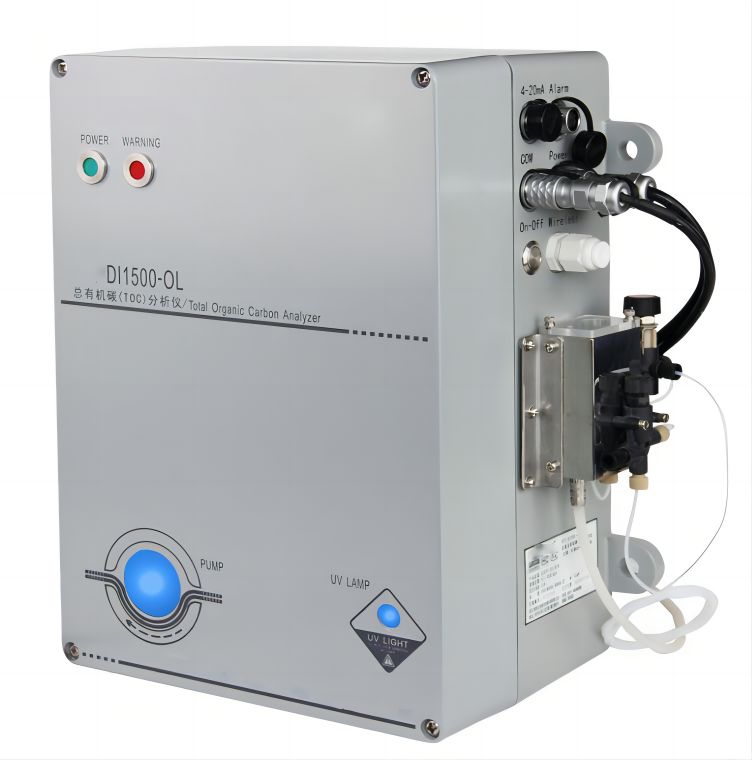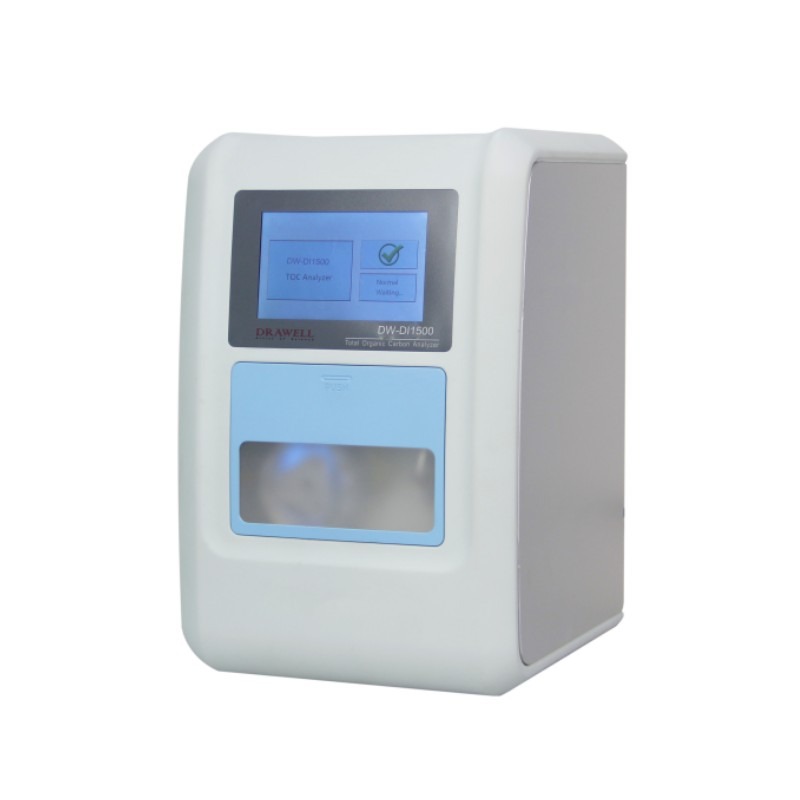A is an instrument used to measure the amount of organic carbon present in a given sample. It is commonly used in environmental testing, water quality analysis, and process monitoring. TOC analyzers work by oxidizing the organic carbon in the sample to produce carbon dioxide, which is then detected and quantified. This measurement provides valuable information about the organic carbon content and the overall quality of the sample being analyzed. TOC analyzers are widely used in various industries to ensure compliance with regulations and to monitor the effectiveness of water treatment processes.

How do you measure Total Organic Carbon Analyzer (TOC)?
A Total Organic Carbon Analyzer (TOC) measures the organic carbon content in a sample through a process known as oxidation. Here’s a general overview of how TOC is measured:
- Sample Preparation: The sample, whether it’s a liquid, solid, or gas, is first prepared for analysis. This may involve filtering, dilution, or digestion, depending on the nature of the sample.
- Injection: The prepared sample is injected into the TOC analyzer. In liquid samples, a small volume is typically injected using an autosampler, while gaseous samples may require a gas sampling system.
- Combustion/Oxidation: The organic carbon present in the sample is oxidized using high temperature and a strong oxidizing agent (such as persulfate or UV radiation) in the combustion chamber of the TOC analyzer. This combustion process converts the organic carbon into carbon dioxide (CO2).
- Detection: The CO2 produced from the oxidation is then detected and quantified. There are various techniques employed for detection, such as non-dispersive infrared (NDIR) spectroscopy or conductivity measurements. NDIR measures the absorption of infrared light by CO2, while conductivity detectors measure the conductivity of the solution after the conversion of CO2.
- Calibration and Calculation: To determine the actual organic carbon content in the sample, the TOC analyzer needs to be calibrated using known standards of organic carbon concentration. The TOC analyzer compares the signal produced by the sample with the calibration curve to calculate the total organic carbon concentration.
- Reporting: The TOC analyzer generates a report with the measured TOC values, which can be used for quality control, regulatory compliance, or process optimization purposes.
What Are the Best TOC Analysis Methods?
There are several methods used for Total Organic Carbon (TOC) analysis, each with its own advantages and limitations. Here are some commonly used TOC analysis methods:
1. High-Temperature Combustion: This method involves combusting the organic carbon in the sample at high temperatures (typically above 800 degrees Celsius) to convert it to CO2. The CO2 is then measured using a non-dispersive infrared (NDIR) detector. This method offers a wide dynamic range and good sensitivity but may not effectively oxidize certain types of organic compounds.
2. UV Persulfate Oxidation: This method utilizes UV radiation and a strong oxidizing agent called persulfate to oxidize the organic carbon in the sample. The resulting CO2 is measured using either a conductivity detector or NDIR. This method is effective for a wide range of organic compounds and has good sensitivity, but it may require longer analysis times.
3. Wet Chemical Oxidation: In this method, the organic carbon in the sample is oxidized using chemical reagents such as potassium dichromate or potassium permanganate. The resulting CO2 is measured using a conductivity detector or by titration. Wet chemical oxidation is a traditional method but may have limitations in terms of sensitivity and potential interferences.
4. Non-Purgeable Organic Carbon (NPOC): NPOC analysis measures the organic carbon that remains in a sample after purging it with an inert gas, such as helium or nitrogen, to remove inorganic carbon. The remaining organic carbon is then oxidized and measured using one of the aforementioned methods. NPOC analysis is particularly useful for samples with high inorganic carbon content.
The choice of the best TOC analysis method depends on several factors, including the nature of the sample, the concentration range of organic carbon of interest, the required sensitivity, and the available instrumentation. It is advisable to consult relevant standards, regulatory guidelines, and the specific requirements of the application to determine the most suitable TOC analysis method for a particular situation.

Why Total Organic Carbon Analyzer (TOC) is Important?
Total Organic Carbon (TOC) analysis is important for several reasons:
1. Water Quality Assessment: TOC analysis is widely used in water management and treatment processes to assess the quality and pollution levels of water sources. It helps identify potential sources of contamination and evaluate the effectiveness of treatment methods.
2. Environmental Monitoring: TOC analysis is crucial for monitoring and assessing environmental pollution in air, water, and soil. It helps determine the presence and concentration of organic pollutants, such as hydrocarbons, pesticides, and industrial byproducts, which can have detrimental effects on ecosystems and human health.
3. Process Control and Optimization: In industrial settings, TOC analysis plays a vital role in process control and optimization. Monitoring the organic carbon content in various stages of production, it helps ensure that processes are running efficiently and within regulatory limits. It aids in identifying potential issues, minimizing waste, and improving overall productivity.
4. Regulatory Compliance: Many industries and facilities are subject to regulations governing organic carbon emissions and discharge limits. TOC analysis provides a reliable and standardized method for quantifying organic carbon content, allowing organizations to ensure compliance with environmental regulations.
5. Pharmaceutical and Healthcare Applications: In pharmaceutical manufacturing, TOC analysis is used to validate the cleanliness and quality of equipment, surfaces, and products. It ensures that pharmaceuticals meet the required standards for safety and efficacy.
6. Research and Development: TOC analysis is utilized in scientific research and development to study organic carbon dynamics, carbon cycling processes, and biogeochemical studies. It provides valuable insights into carbon sources, sinks, and transformations in various natural and engineered systems.
Overall, TOC analysis is essential for understanding and monitoring organic carbon content and its impact on water quality, environmental health, industrial processes, and regulatory compliance. It enables informed decision-making, pollution prevention, and sustainable resource management.


